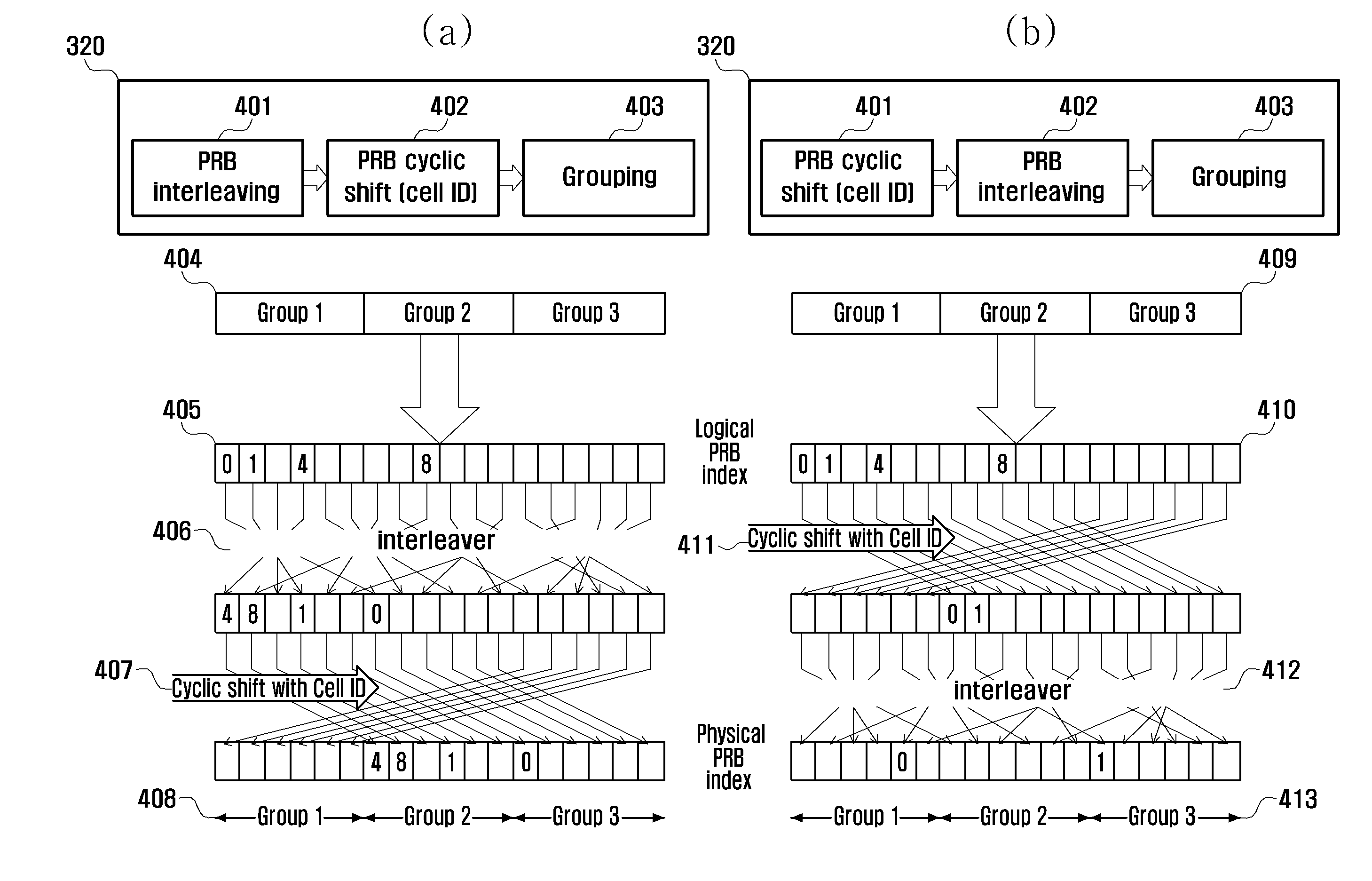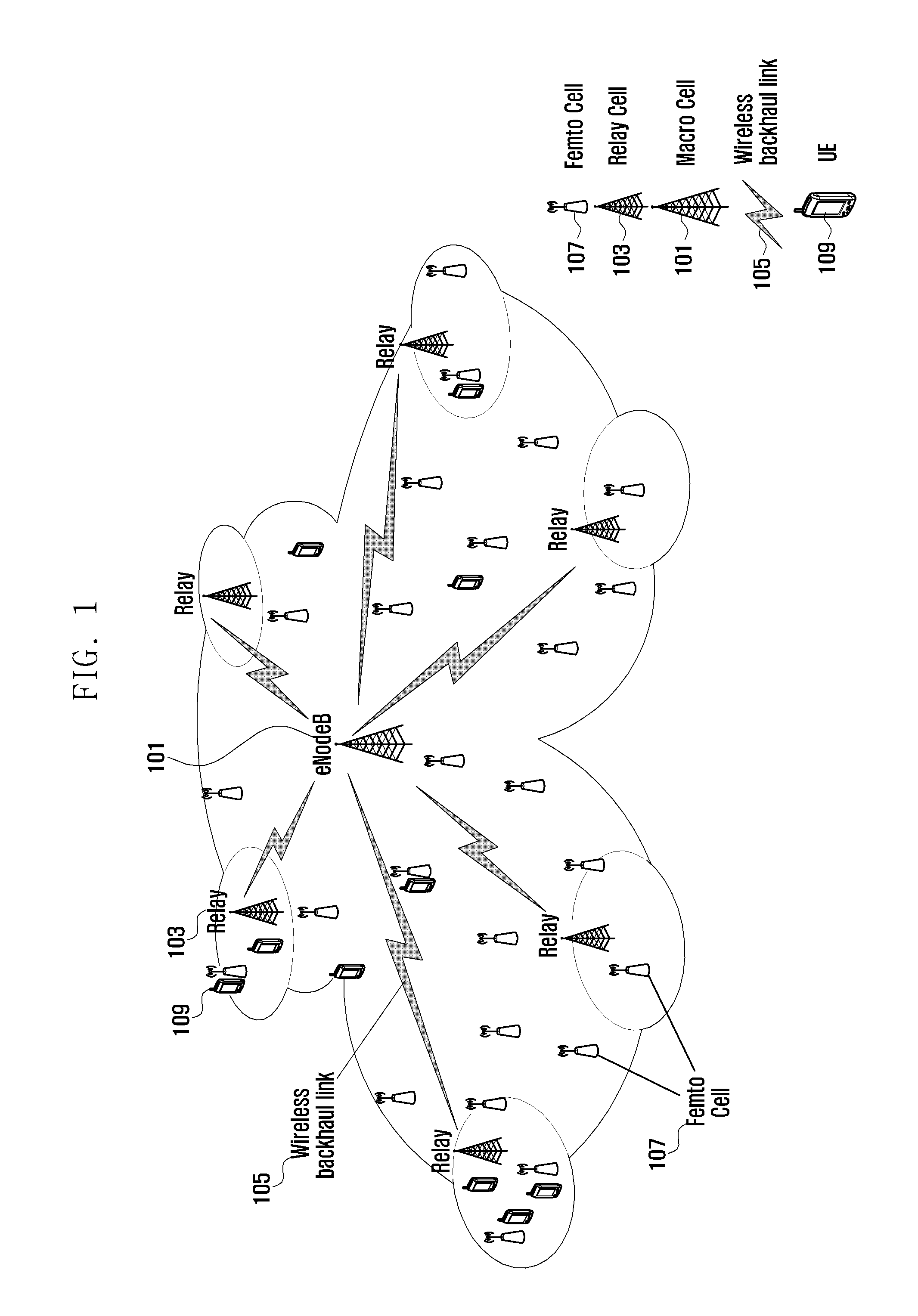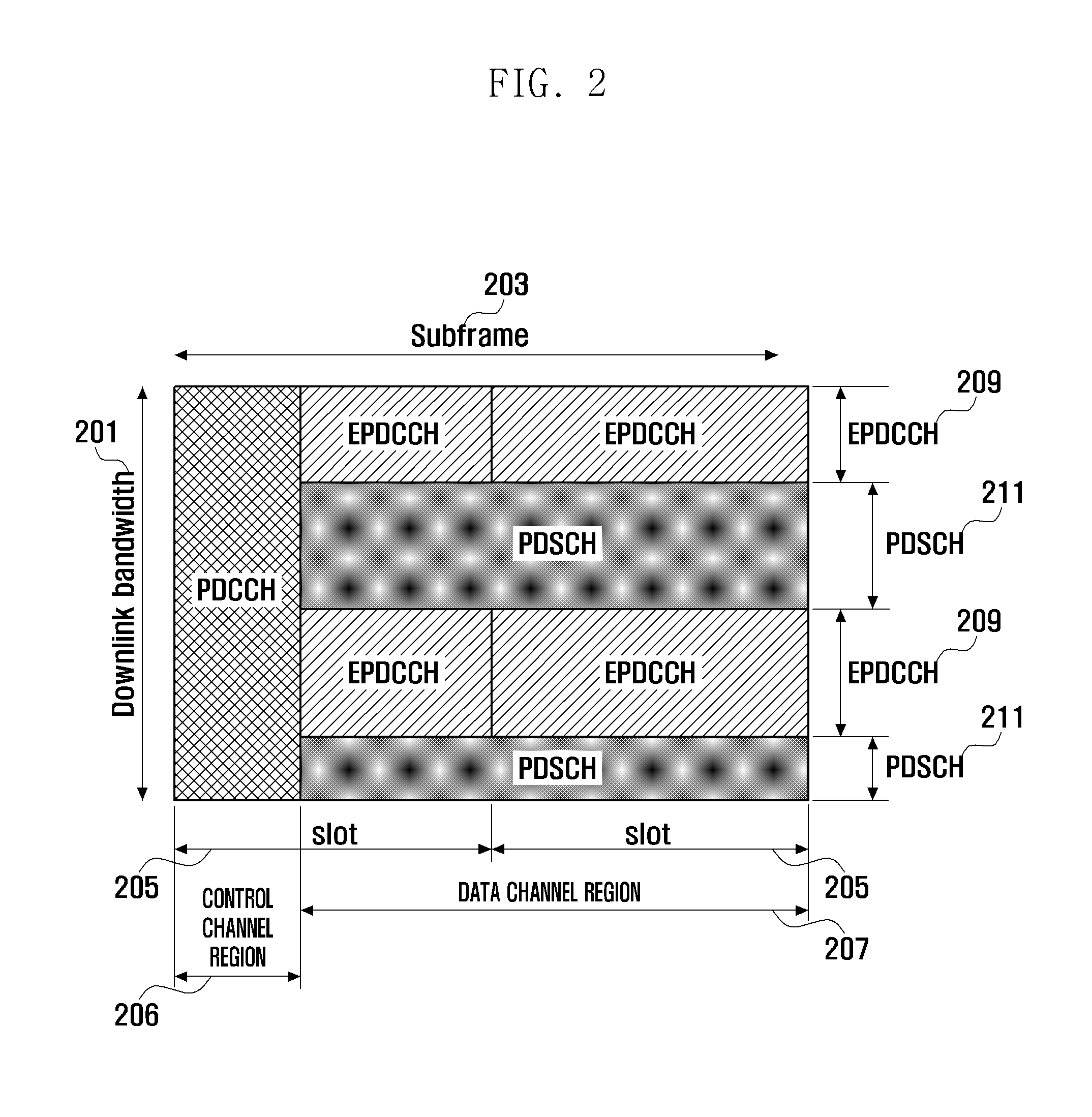Method and apparatus for grouping control channel resource in mobile communication system
a control channel and resource technology, applied in the direction of criteria allocation, digital transmission, transmission path sub-channel allocation, etc., can solve the problems of limited application in real systems, inability to widely use of ofdm scheme, impediment to high speed and high quality data service, etc., to achieve efficient inter-cell interference distribution and efficient adjustment of interference
- Summary
- Abstract
- Description
- Claims
- Application Information
AI Technical Summary
Benefits of technology
Problems solved by technology
Method used
Image
Examples
first embodiment
[0059]FIG. 4 illustrates a grouping structure of a control channel resource according to the present invention.
[0060]The first embodiment is a grouping method using an interleaver of a public PRB unit between cells and cyclic shift based on a cell ID. The method randomly allocates PRB index to groups within different cells but having the same group index. When coordination between cells is impossible because there are very many cells between heterogeneous cells, each resource group may use a random resource to distribute interference. Furthermore, an eNodeB may freely select a resource without coordination between cells. The size of the group is a PRB unit, and enables both a method using a fixed value and a method informing a UE of upper signaling according to a bandwidth for downlink.
[0061]A grouping method being step 320 of FIG. 3 using an interleaver of a public PRB unit between cells and cyclic shift based on a cell ID may be performed as shown in FIG. 4(a) and FIG. 4(b). First...
second embodiment
[0067]FIG. 5 illustrates a grouping structure of a control channel resource according to the present invention.
[0068]The second embodiment is a grouping method using an interleaver of a public PRB unit between cells and a physical layer identity (referred to NID(2)′ hereinafter). The NID(2) is one of two elements constituting a cell ID. In detail, one cell ID is composed of a physical layer cell-identity group (referred to NID(1)′ hereinafter) and an NID(2). The NID(1) is one of three IDs allotted to a macro cell. The NID(2) is an ID allotted to a small cell and may have a number of values. Thus, small cells located in a macro cell receive allotment of one value of the NID(2) and macro cells managed by the macro eNodeB divides three values of the NID(1).
[0069]It is assumed that a control channel is grouped based on the NID(2). However, the present invention is not limited thereto. That is, a plurality of values constituting NID(2) are divided into several groups, and PDCCHs may be c...
third embodiment
[0074]FIG. 6 illustrates a grouping structure of a control channel resource according to the present invention.
[0075]The third embodiment is a grouping method using an interleaver of a public PRB unit between cells. Unlike the first and second embodiments, the third embodiment performs a common interleaver in step 601 between cells but does not perform cyclic shift. Through the third embodiment, results after grouping in step 603 are the same between cells and base stations. Further, the third embodiment may be used when there are a few cells between heterogeneous cells or a backhaul channel resource is divided by relay cells. Accordingly, relay cells in a base station may construct a backhaul resource by close coordination and secure a channel with high efficiency.
[0076]A grouping procedure of the third embodiment is identical to that of the first embodiment. The difference is that the third embodiment does not perform cyclic shift. If a group in 604 is determined, all cells conver...
PUM
 Login to View More
Login to View More Abstract
Description
Claims
Application Information
 Login to View More
Login to View More - R&D
- Intellectual Property
- Life Sciences
- Materials
- Tech Scout
- Unparalleled Data Quality
- Higher Quality Content
- 60% Fewer Hallucinations
Browse by: Latest US Patents, China's latest patents, Technical Efficacy Thesaurus, Application Domain, Technology Topic, Popular Technical Reports.
© 2025 PatSnap. All rights reserved.Legal|Privacy policy|Modern Slavery Act Transparency Statement|Sitemap|About US| Contact US: help@patsnap.com



